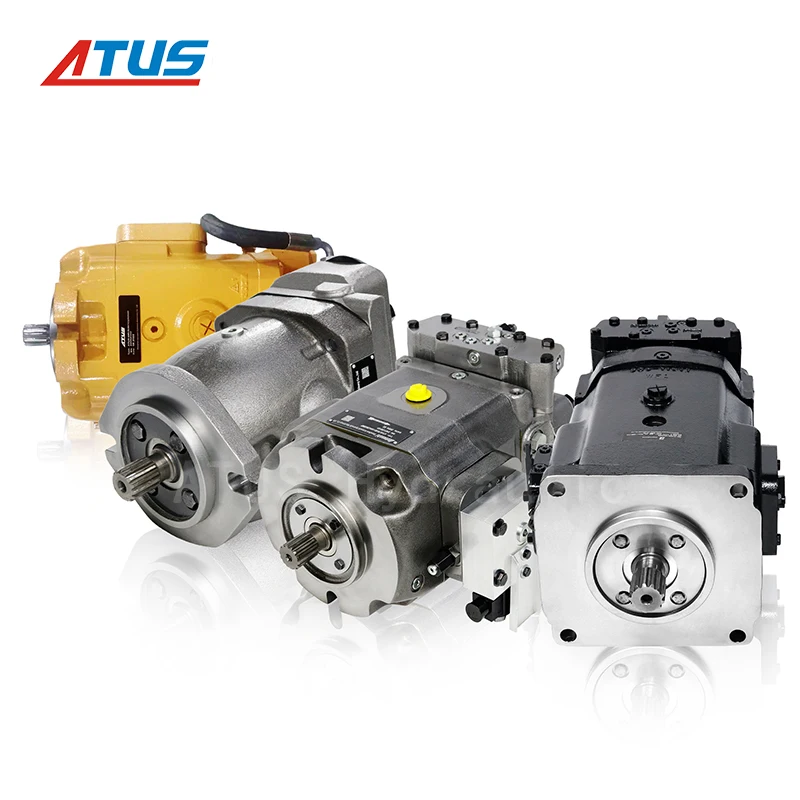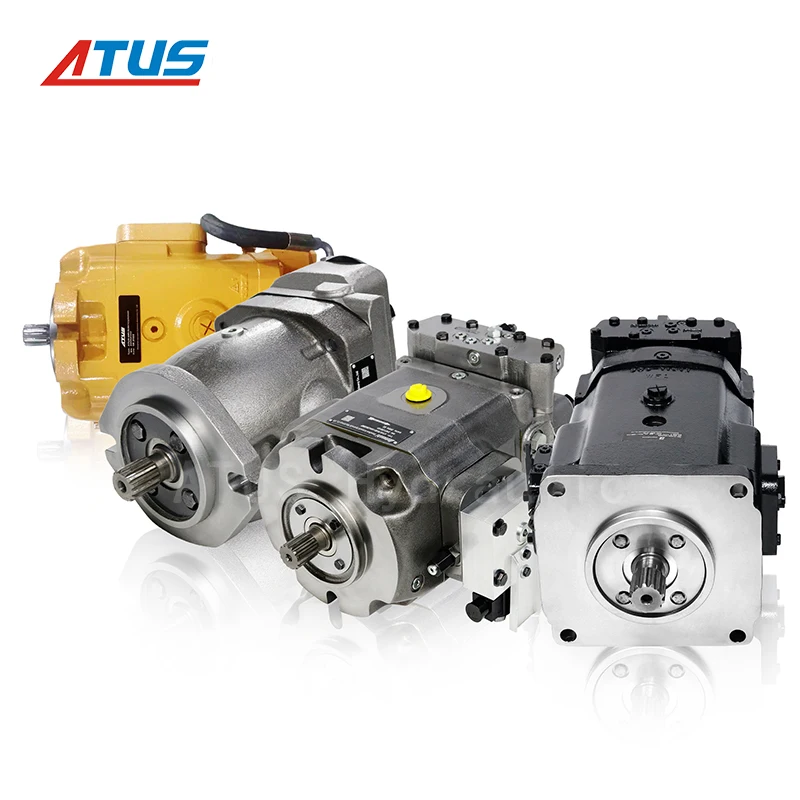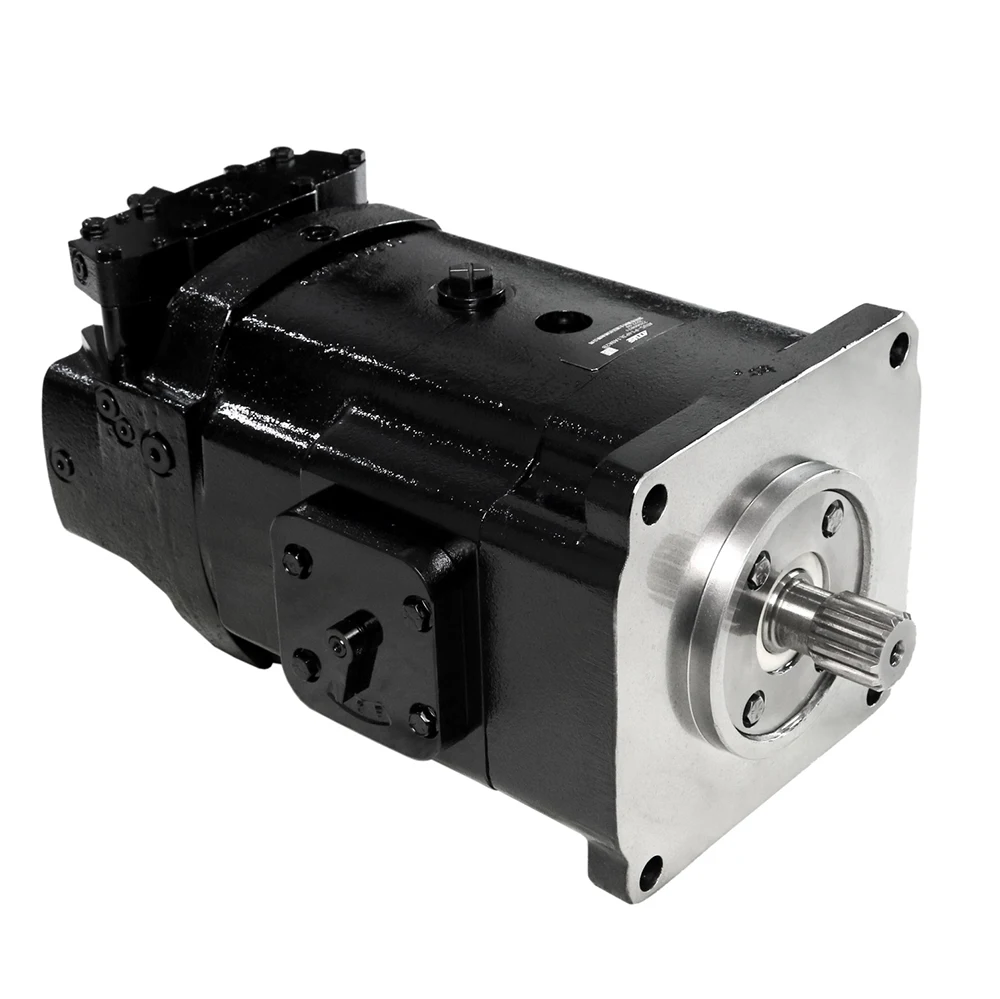Hydraulic motors basically take hydraulic energy and turn it into mechanical energy, making them pretty important for running all sorts of machines. These components show up a lot in places like construction sites, farms, and factories because they do a good job converting fluid power into actual movement. When these motors get pressurized fluid from pumps, it moves around inside and creates rotation that powers equipment. That's why we see them used so much in tough jobs that need dependable mechanical power day after day.
When it comes to industrial applications, nobody can really argue against the importance of hydraulic energy. These systems just work better than most alternatives when it matters most. They pack a lot of punch relative to their size and deliver consistent performance even under tough conditions. Take construction sites for instance. Excavators need those big hydraulic motors to dig through rock and soil all day long without breaking down. Farmers rely on similar technology too. Tractors and combines run on hydraulics because nothing else handles the heavy lifting quite so well. The combination of compact power and fine control makes these systems indispensable throughout manufacturing, transportation, and countless other fields where reliability counts above all else.
Hydraulic motors work by turning hydraulic energy into actual mechanical power using pressurized fluid. The process starts when fluid gets forced into the motor under high pressure. As this fluid moves through different chambers inside, it pushes against moving parts like rotors or pistons. These parts then start spinning, which causes the output shaft to rotate too. What we get from all this movement is either motion or torque, depending on what needs to be powered. Construction equipment, agricultural machinery, even some industrial robots rely on this basic principle to function properly day after day.
To understand their function in more detail, it's vital to examine the key components of hydraulic motors, each contributing to its overall performance:
1. Rotor: The rotor, often driven by fluid pressure, is crucial in creating rotational motion. Its interaction with pressurized fluid causes the necessary spin to drive mechanical operations.
2. Casing: The motor casing encloses all internal workings, safeguarding components from external damage and ensuring that the internal fluid remains under the necessary pressure.
3. Sealing Elements: Proper sealing is essential to maintain pressure and prevent hydraulic fluid leaks, ensuring the motor operates efficiently.
Understanding these components and their roles helps in appreciating the efficient conversion process within hydraulic motors and their wide application in various industrial settings.
Hydraulic motors play a really important role in turning hydraulic energy into actual mechanical power, and different types have their own strengths. Take gear motors for instance they're pretty common because they're simple to work with and get the job done efficiently. Basically, these motors contain two gears that fit together inside a metal housing. As pressurized fluid flows in, those gears start spinning, which transforms the fluid's energy into something we can use mechanically. What makes gear motors stand out is their toughness they can take on serious pressure without breaking down. That's why farmers rely on them in tractors and harvesters, and construction crews put them in concrete mixers where things get pretty rough on equipment.
Vane motors, sometimes called rotary vane motors, stand out for their precision and smooth running. The basic idea involves sliding vanes inside a rotor that form changing chambers as hydraulic fluid flows through, making the output shaft spin. What makes these motors special is how well they handle torque even when moving slowly. This matters a lot in situations where fine control is needed, like adjusting robotic arms or positioning parts in machining operations. Many manufacturers prefer them exactly because of this ability to maintain control without sacrificing speed.
Piston motors stand out because they pack a lot of power into versatile packages. There are basically two kinds on the market today axial and radial designs, each using pistons to convert hydraulic pressure into actual movement. The axial type tends to be smaller in size while still delivering impressive power levels, which makes sense why engineers often choose them when working within tight spaces. Radial models offer something different though substantial torque capacity along with smoother transitions between speeds. That's why many industries rely on radial piston motors for tough jobs such as operating large cranes or powering ships through rough waters. Knowing the differences between these options helps professionals pick what works best for their specific requirements, ensuring both adequate power delivery and necessary control over operations.
Getting a handle on torque and displacement really matters when looking at how well hydraulic motors perform. Torque basically measures rotational force, which tells us how much load a motor can actually move around. Take it from experience, motors packed with high torque work great for tough jobs like lifting heavy stuff or moving big machines around construction sites. Now displacement is another key factor here. It's all about how much fluid moves through the system with each turn of the motor shaft, and this affects both speed and torque output. Fixed displacement motors keep things simple with steady torque and speed levels, so they're pretty reliable for straightforward tasks. Variable displacement models are different though. These babies can adapt to whatever the situation throws at them during operation, which makes them super versatile for applications where conditions change constantly throughout the day.
A few key factors affect how well hydraulic motors perform, including things like fluid viscosity, temperature changes, and overall system design. When it comes to hydraulic fluids, their thickness or thinness really matters for how they flow through the system. If the viscosity is just right, the motor runs smoother and wastes less energy. But temperature plays tricks on this too. Hotter fluids get thinner while colder ones thicken up, which messes with performance. Then there's the actual setup of the whole hydraulic system itself. How well the motor fits with other parts and where everything is positioned makes a big difference in converting that hydraulic power into real mechanical work. Getting these basics right means the motor will handle different operating conditions without breaking a sweat.
Picking out the correct hydraulic motor involves knowing quite a few important things about what it needs to do. Start by looking at how much weight it has to handle, what kind of speed is needed, and where exactly it'll be working. Take construction gear versus farm machines for example the specs needed are totally different between those two worlds. Dust, dirt, and moisture levels matter too when choosing a motor. Motors exposed to harsh conditions need extra protection features built in so they last longer without breaking down. Most experienced technicians know that motors running in contaminated environments should have better seals and maybe even special coatings to fight against corrosion. Getting this right from the start saves money in the long run since replacement costs add up fast if the wrong motor gets chosen.
Talking to experts and suppliers really makes a difference when picking out equipment. People who sell hydraulic motors know their stuff and can point customers toward the right choice for their particular situation. These professionals stay up to date on new developments in motor tech, including things like improved efficiency ratings or better materials that last longer under stress. When businesses take the time to consult with knowledgeable suppliers, they end up selecting motors that work well now and will continue to perform reliably as operations grow and change over time. This kind of partnership leads to better overall results for anyone running hydraulic systems.
Explore our featured hydraulic motors, designed to meet a variety of industrial needs and applications:


